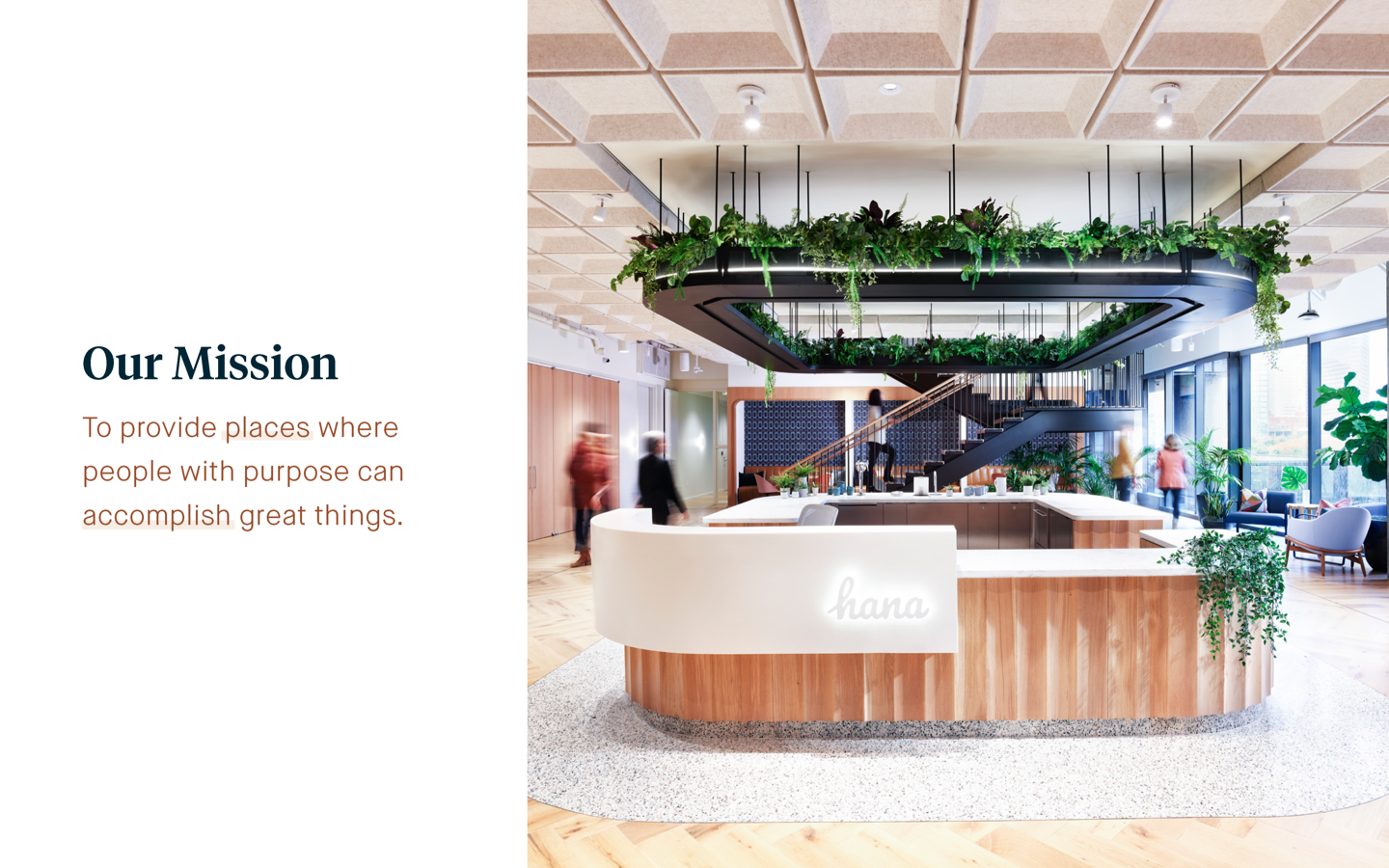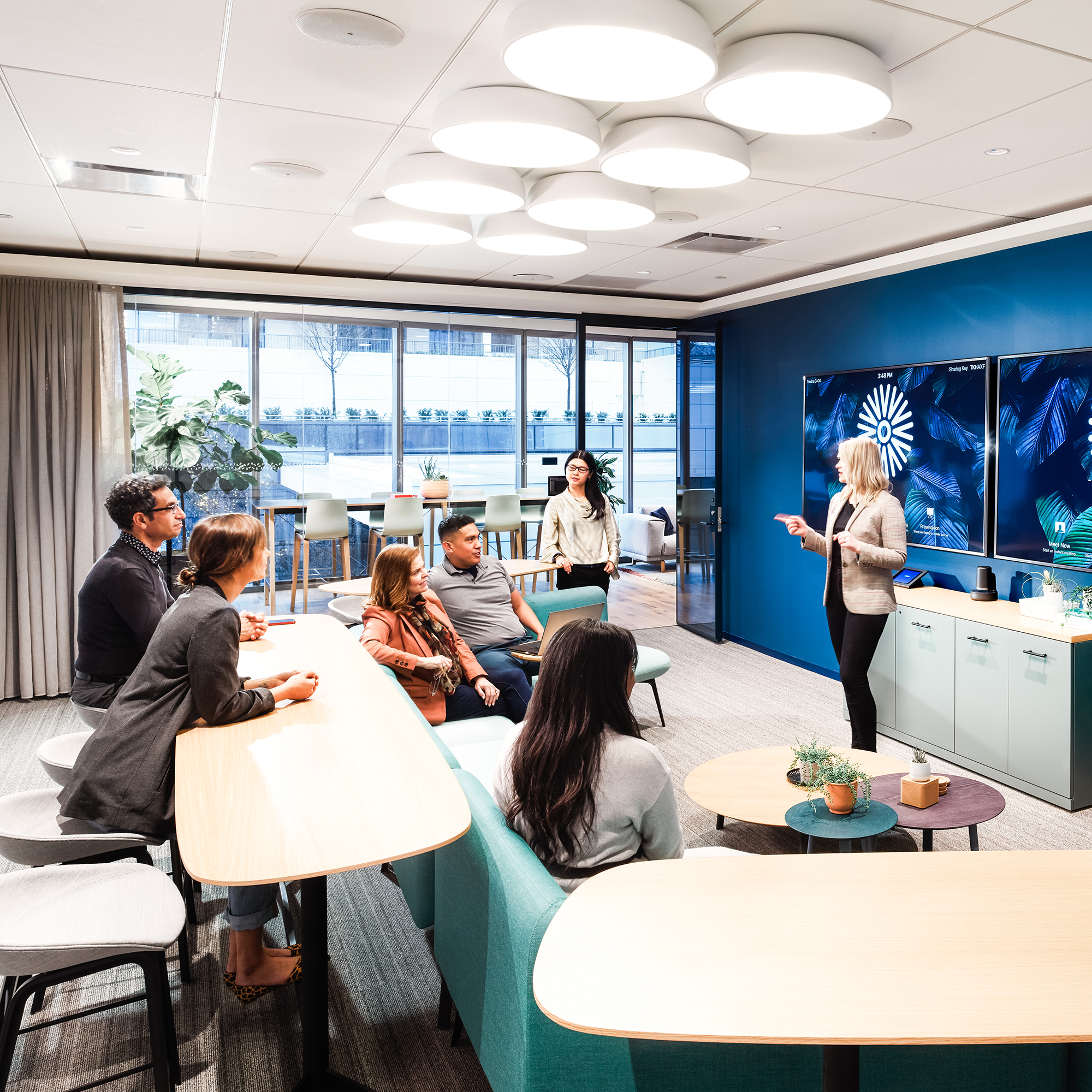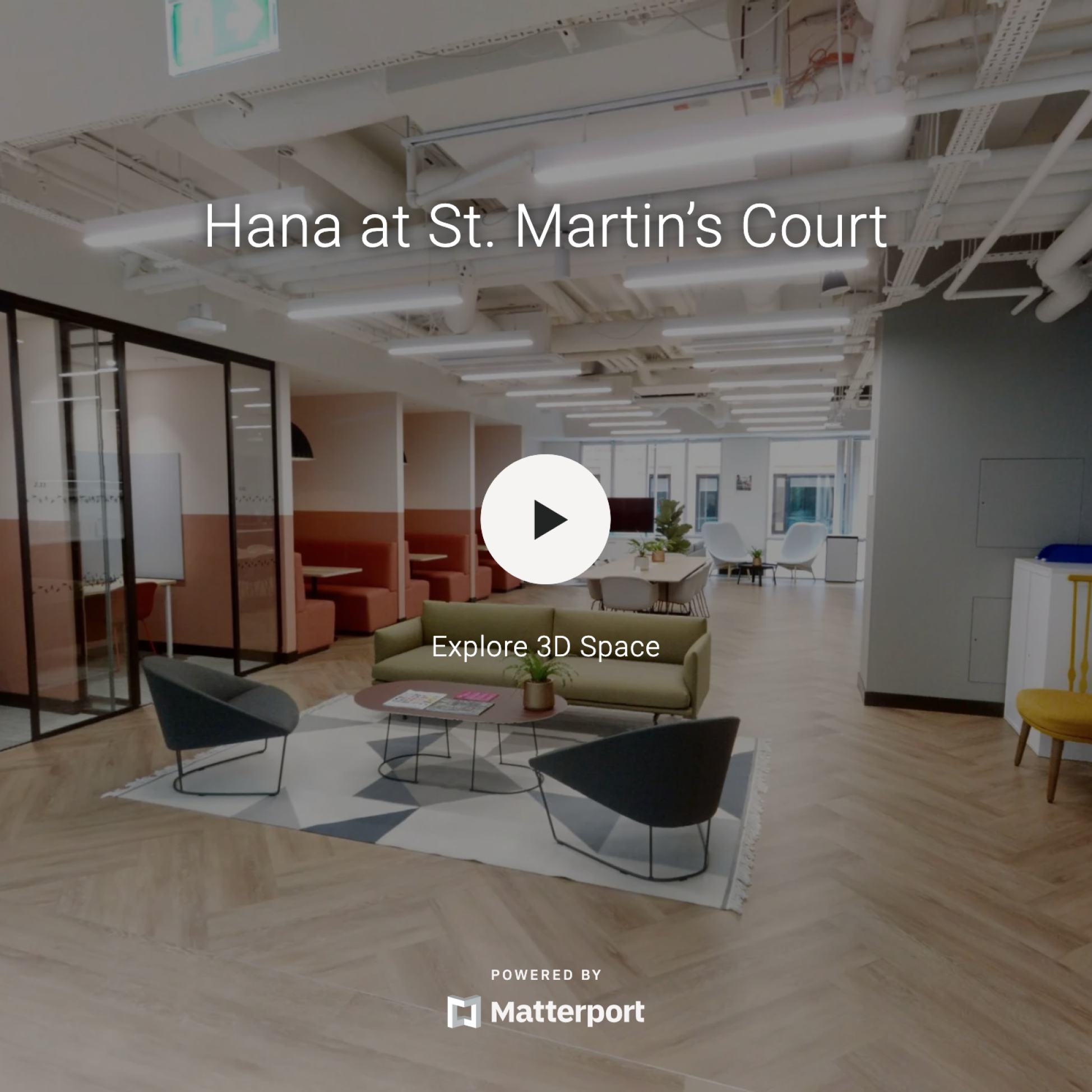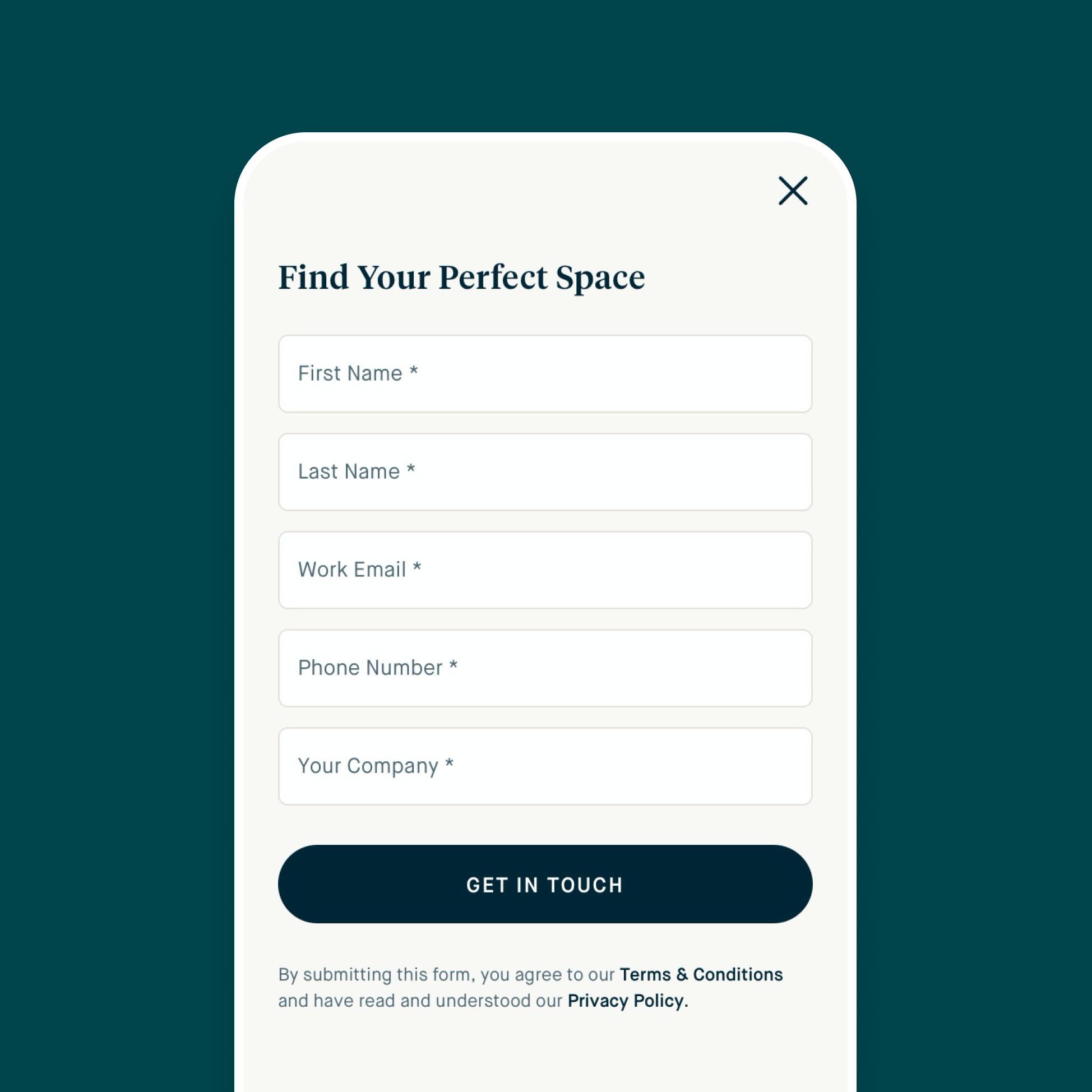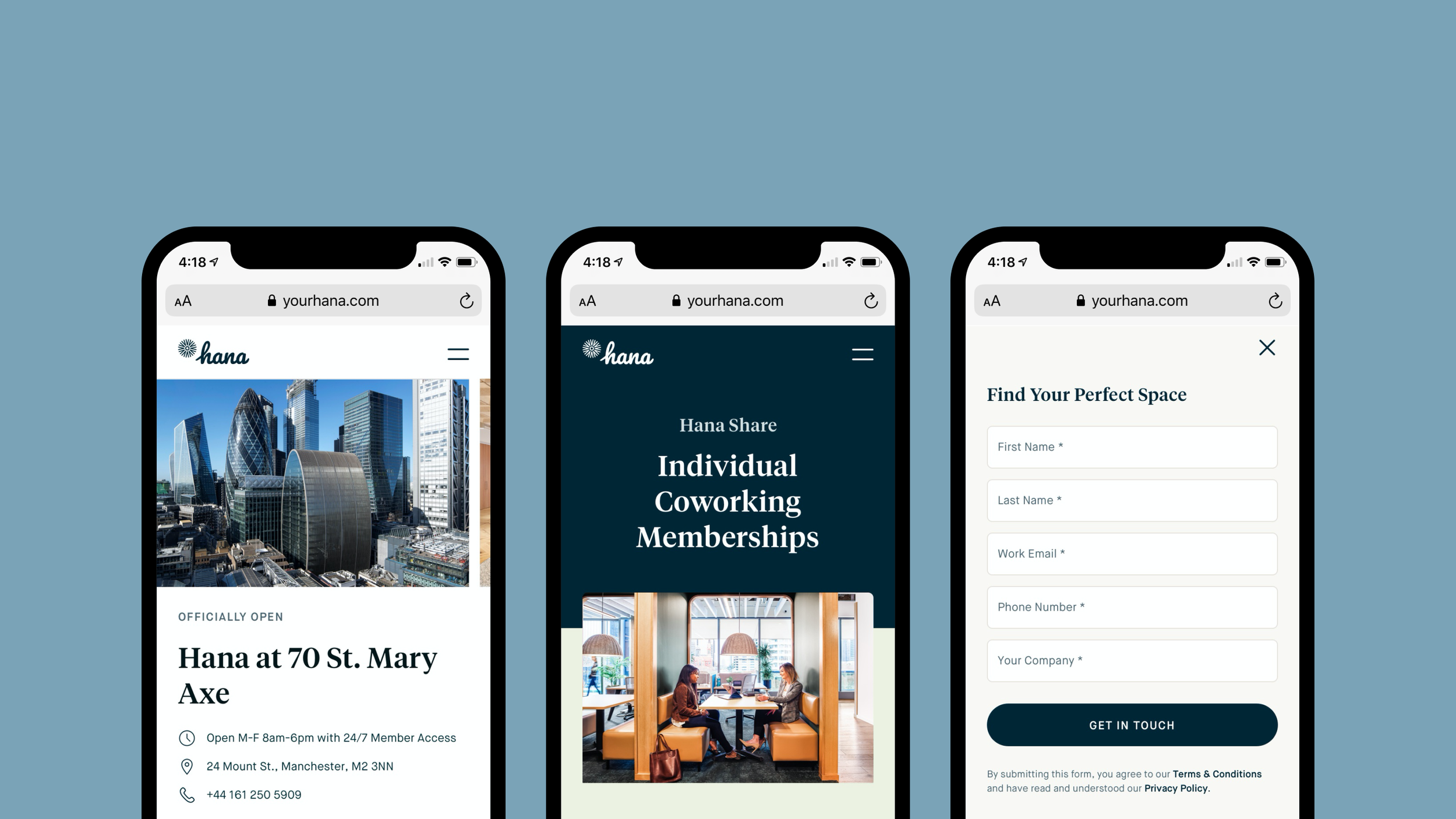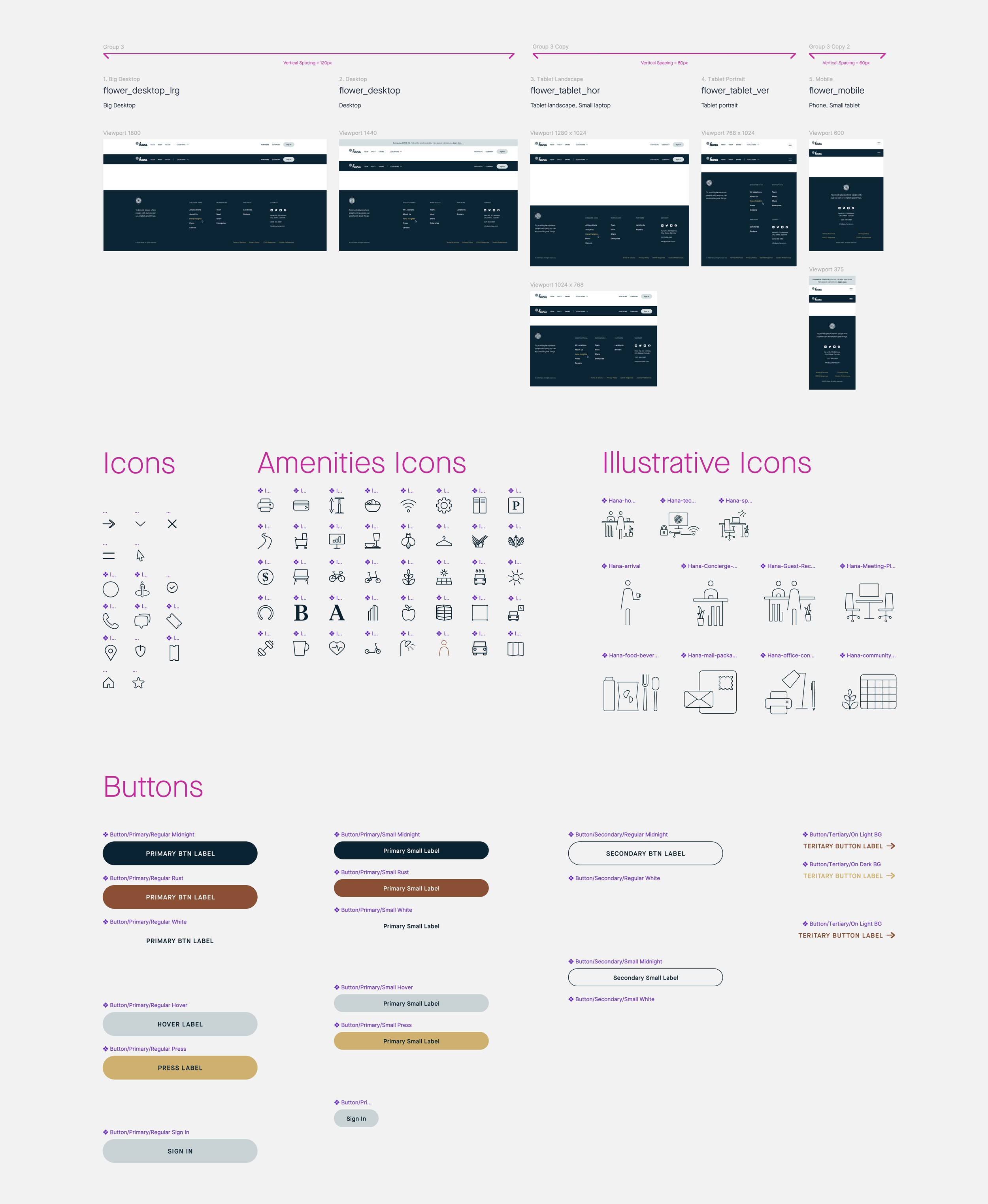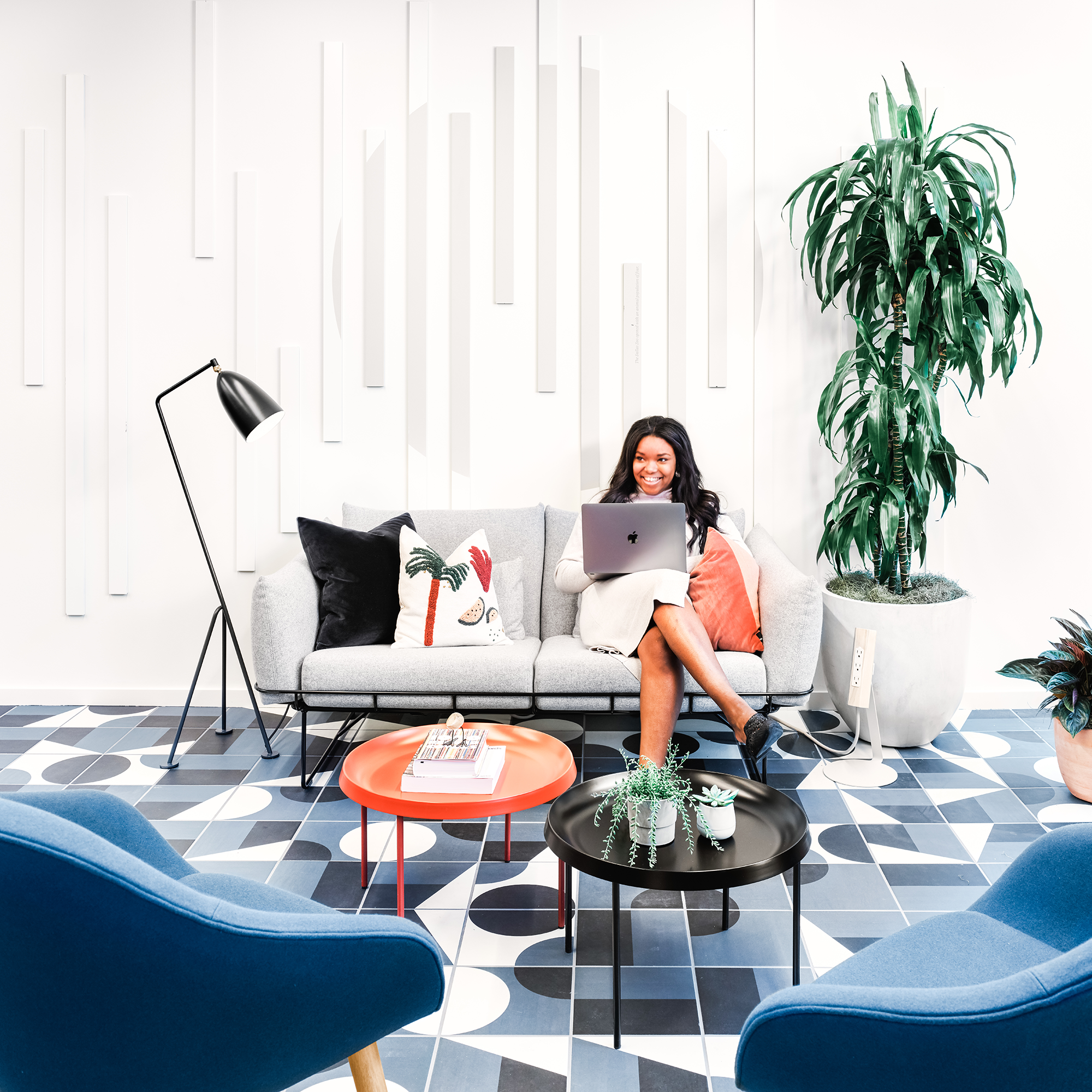Hana (A CBRE Company)
Transforming tech-enabled workspaces with customer-first experience design
Role: Director of Product Design, Customer-centered Design Strategy, Product Design Vision, UX, Creative, and Team Building
Timeline: June 2019 - September 2021
Markets: United States & United Kingdom
The Challenge
When I joined Hana, the company had a compelling vision and beautifully designed physical spaces preparing to launch across Dallas, California, London, and Manchester. However, the digital infrastructure was fragmented, with disconnected touchpoints that failed to match the sophistication of the physical environments.
As a CBRE subsidiary serving everyone from Fortune 500 companies to individual entrepreneurs, Hana needed enterprise-grade digital products that could seamlessly integrate IoT-enabled workspaces, security systems, safety monitoring, logistics, space optimization, and hospitality services into a unified customer experience.
The Opportunity
Create seamless integration between physical and digital systems to deliver exceptional hospitality-led customer experiences guided by the Japanese concept of Omotenashi—anticipating customer needs through thoughtfully crafted, invisible yet indispensable technology.
My Process Overview
-
What’s working and what’s not. At the start of any project, my approach is to look at every aspect to understand what’s working about the product experience(s), the team dynamics, and the alignments to business goals.
See more below -
Even though Hana had three physical products lines at Hana, the customer personas were far from simple. I also needed to understand the mental models of all our customers types at every point of the customer journey.
See more below
-
Hana operated like a startup, so we had to be lean and effective. Hana was set to grow at a rapid pace. Locations were launching almost monthly, so our products needed to not only support this expansion, but also help drive the overall growth. We needed to up level the user experience of our digital products and part of my role to work with all partner teams to make it happen.
See more below
-
Whether it’s working with in-house talent or needing to grow, have a strong team that works well togher is key. At Hana, I built a high-performing distributed design team from 0-5 designers and established best practices for customer-centric product design, user research, and content strategy.
See more below
-
Working in close partnership with product and engineering teams, we all worked together to ensure we’re working on the right things at the right time, even if that’s working on everything all at once. Working back from the customer experience is always my north star and to ensure the best experience and business outcomes, all players involved in the product development have to work well together. Creating a trusted, truly agile, working relationship between product, design, engineering, and all stakeholders is one of my super powers.
See more below
-
Validate everything. Don’t assume anything. Even the prior research. At Hana, we tested every part of the customer experience and in creating a culture of learning, we were not afraid to try things and fail. And being able to work in our own spaces, created a lab-like experience, where we could interact and observe with customers directly.
See more below
-
Make sure it’s all working. As builders, we were all entrepreneurs and self-starters with a bias towards action and outcomes. We optimized along the way, putting an emphasis on the big moments of the experience to get them right, so we could move on to other parts of the experience we hadn’t tackled yet.
See more below
Then do it again and again…
My Design Process & Impact
1. Observe & Collect Data
Understanding the foundation before building
What I Did:
Conducted comprehensive audit of existing digital touchpoints already launched or in development
Evaluated team dynamics and business goal alignment across product, engineering, and operations
Assessed competitive and comparative landscape and industry best practices for flexible workspace technology
Key Findings:
No matter the persona type, the user experience navigating across multiple systems, on- and off-platform had to be seamless
First iteration of marketing website was not performing as intended and required inefficient resource allocations to update and scale not aligning to business rapid growth needs
Operations platform requirements were not prioritized and customer personas were unclear making the overall experience being built overly complicated
The basic design system wasn’t scalable to support all digital touchpoints
Quality of products didn’t match the quality of the workspaces, which created a disjointed customer experience
2. Customer Deep Dive
Mapping complex, multi-faceted user needs
What I Did:
Expanded upon intial customer research, breaking out more persona types and developed behavioral personas based on workspace usage patterns, not just demographics
Conducted customer interviews across B2B enterprise, SMB, and individual user segments
Created detailed journey maps for each customer type across physical and digital touchpoints
Established user research infrastructure including feedback loops and analytics tracking
Key Findings:
Enterprise customers (40-50% of revenue): Required robust admin controls, multiple team configurations across locations, usage analytics, security, and seamless integration with existing corporate systems; customer looking for flexible workspaces were most likely not end user
SMB customers (45-50% of revenue): Needed simple onboarding, flexible billing options, and space availability transparency
Individual users (15% of revenue): Prioritized mobile-first experience, community features, and straightforward booking/access
Customer Pain Points Identified:
Customers were confused by product offerings as presented through marketing site
Customers abondoned conversion funnels due to multi-step user experience that asked for too much upfront information
Marketing language didn’t match sales language around offerings
3. Plan Design Strategy
Creating scalable solutions for rapid expansion
What I Did:
Developed comprehensive design strategy aligning customer needs with business objectives
Created prioritization framework balancing short-term launches with long-term platform scalability
Established design principles rooted in Omotenashi philosophy of anticipatory hospitality
Built cross-functional alignment through design thinking workshops and strategy sessions
Strategic Priorities:
Unified Customer Acquisition Platform: Streamline discovery-to-onboarding experience
Integrated Booking & Access System: Connect physical space technology with digital interfaces
Enterprise-Grade Admin Portal: Provide corporate customers with usage analytics and team management
Mobile-First Experience: Enable seamless workspace interaction through smartphone app
Scalable Design System: Support rapid location expansion while maintaining quality
Design Principles Established:
Anticipatory: Technology should predict and fulfill needs before customers realize them
Invisible: Complex systems should feel effortless and intuitive
Consistent: Every touchpoint should reinforce Hana's premium positioning
Flexible: Solutions must adapt to diverse customer types and use cases
Impact Metrics:
Achieved 100% stakeholder alignment on design strategy across 6 departments
Reduced feature specification time by 60% through strategic framework
Created 18-month product roadmap supporting 200% location growth plan
4. Build The Team
Establishing design excellence from zero
What I Did:
Hired and onboarded team of talented designers across product design, visual design, and user research
Established design operations including tools, processes, and quality standards
Culture & Processes Established:
Weekly design reviews with customer feedback integration
Bi-weekly cross-functional planning with product and engineering
Created more streamlined way of working that was collaborative and broke down walls between siloed teams
Impact Metrics:
Built 5-person design team in 8 months with 100% retention rate
Increased design team productivity through streamlined processes
Achieved 95% design-to-development accuracy through improved collaboration
Reduced design review cycles from 5 rounds to 2 rounds average
5. Roadmap Product Initiatives
Orchestrating complex, interconnected product development
What I Did:
Created integrated roadmap connecting mobile app, web platform, billing systems, and IoT infrastructure
Established agile design process with 2-week sprint cycles aligned to engineering
Built stakeholder communication framework ensuring design influence on product decisions
Developed risk mitigation strategies for complex technical integrations
Enterprise Admin & Customer-Facing Portal
Unified Mobile & IoT Experience
Customer Acquisition Platform Redesign
Cross-Platform Design System
6. Test with Customers
Validating solutions through continuous feedback
What I Did:
Established testing protocols for every customer touchpoint before launch
Built feedback collection systems integrated into product interfaces
Developed rapid prototyping process enabling weekly iteration cycles
Testing Methods Implemented:
Prototype Testing: Weekly sessions with 8-12 customers per product iteration
A/B Testing: Conversion optimization across booking funnels and onboarding flows
Analytics Integration: Heat mapping, user flow analysis, and behavioral tracking
Guerrilla Testing: On-site observations of customers using workspace technology
7. Measure the Impact
Demonstrating business value through design outcomes
What I Did:
Established KPI tracking for all design initiatives with quarterly business reviews
Built measurement frameworks for both quantitative performance and qualitative satisfaction
Revenue & Growth Impact:
52% business growth attributed to customer acquisition platform improvements
Operational Efficiency Impacy:
Design team productivity increased through process optimization
Cross-functional collaboration improved across all departments
Product development cycle reduced through design system implementation
Design-to-development handoff accuracy reached 95% reducing rework cycles
Then do it again and again and again…
My Overall Impact
Leading product design at Hana demonstrated how thoughtful, customer-centric design can transform complex B2B/B2C technology platforms into competitive advantages. By establishing design as a strategic business function and creating integrated experiences across physical and digital touchpoints, we not only achieved significant business growth but we also enjoyed our work.
The 52% business growth, improved customer sentiment, and successful team building (0→5 designers) proved that investing in comprehensive design strategy and execution delivers measurable business value while creating experiences that customers genuinely love.
Director of Product Design
@ Hana (A CBRE Company)
2019-2021
DIGITAL PRODUCT DESIGN TEAM:
Don Eschenauer - Design Strategy, Customer Experience, and Brand Design Direction
Jaime Yong - Design Lead / Visual Design
Rosa Moran - User Experience / Research
Oleh Nedilko - Product Design
Sai Gautam Pulikanti - Product Design
MARKETING TEAM:
Lindsay Wester - Brand Director
Aaron Winston - Brand Content Strategy / Copy
Marissa Netley - Marketing Manager / Design
ARCHITECTURE / INTERIOR DESIGN TEAM:
Andrew Kao, AIA , Rebecca Dale, RA, Pyline Tangsuvanich, RA, Claire Keane


